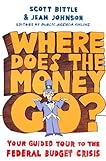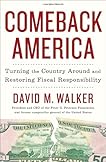Below is a piece I first published on my (Not) Idle Chatter blog (August 22, 2009), during the Summer of Crazy (1967 had its Summer of Love...since then we have descended a few notches). The post references a couple of interesting reads that I thought followers of the Reading Corner might appreciate. I have posted it here for my fellow bibliophiles.
**************************************************************
A few weeks ago, I wrote about the Right Wing furor over the health care debate. In that post, I tried to place the hysteria into a historical context. See "
When the Going Gets Tough...".
For a more detailed and eloquent analysis of this same phenomenon, please read Rick Perlstein's Washington Post editorial "
In America, Crazy Is a Preexisting Condition: Birthers, Town Hall Hecklers and the Return of Right-Wing Rage" that appeared on August 16, 2009. In his piece, he points out that commentators tend to view the so-called "Astroturf protests" as either "genuine grass roots" activism or an evil conspiracy "staged for You Tube." In fact, Perlstein argues they are both:
If you don't understand that any moment of genuine political change always produces both, you can't understand America, where the crazy tree blooms in every moment of liberal ascendancy, and where elites exploit the crazy for their own narrow interests.
Perlstein provides ample evidence for the presence of reaction and counter-reaction in periods of reform in the United States. Everything, from FDR and Truman's social safety net of the New Deal, to Kennedy's efforts to limit nuclear proliferation, to the Civil Rights movement and the legislative correctives that came about as a result, has been linked to Soviet style takeovers and the creeping spector of Communism.
It also bears mentioning here that Reagan's infamous 1961 recording warning about socializing medicine was directed at the legislative moves toward Medicare, a now hugely popular program, even among critics of health care reform (the "Keep government out of my Medicare" crowd).

Those interested in the emergence of the Right in the aftermath of the 1960's are encouraged to check out -- Rick Perlstein's book,
Before the Storm: Barry Goldwater and the Unmaking of an American Consensus (2001) and Lisa McGirr's
Suburban Warriors: The Origins of the New Right (2002). These authors distinguish the old Right, primarily concerned with economic and market-based interests with the New Right, a broad-based constituency that melded the economic interests of business with social issues such as abortion, women's rights, etc. Both analyze how through grassroots efforts, conservatives built a movement that captured the imagination of the predominantly white, suburban middle class in the wake of Goldwater's resounding defeat in 1964.

Progressives and liberals alike would do well to take these historical lessons into account.
Yes, these are truly strange times in which we live. As we have seen in recent weeks, there is no shortage of fear-mongering. However, as Perlstein and McGirr point out, it is not advisable to underestimate the power of irrational, scare tactics to win the hearts and minds of the American populace. If health care reform is to become a reality, we need not sit idly by and wait for the Right to implode under the weight of its own illogic. If we are serious about creating change that we can all believe in, we need to make our voices heard.
 Half Empty by David Rakoff
Half Empty by David Rakoff
















